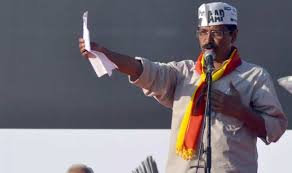Silicon Valley boosts the fortunes of India's most exciting political party


The meteoric rise and continued success of the Aam Aadmi Party in India from no political presence a few years ago to the most potent third national alternative, other than the BJP and the Congress, says something about the nature of Indian politics and how desperate people in the country are for a system that is transparent, corruption free.
However, AAP's success can also be attributed to a group of idealistic Silicon Valley techies who sense this to be the most realistic shot at changing a rotten system in their homeland, and have galvanized themselves to give AAP leader Arvind Kejriwal and his cadre perhaps the most potent weapon they can in this election season: a technology platform for connecting people and attracting funds from fellow change-minded idealists in the US and across the world.
According to this article, the Valley volunteers, some 200 hundred-strong have used their core competencies to architect back-end systems using open-source software which the party has opted for, building a database of supporters and attracting funding.
One such journeyman is Pran Kurup, CEO of e-learning firm Vitalect, who develops digital content for the party. "When AAP announced the first set of candidates for Lok Sabha elections last month, the Silicon Valley team was in charge of technology, which involved updating the party website with photographs, descriptions and adding all this into a central database," he told the Economic Times.
Many have chucked their careers to catalyse the dream of a corruption free India which AAP—whose symbol is, aptly, the broom—is promising if elected to power. Former Apple employee Jaya Sahi is apparently one of them who ditched a career at the company to help out at AAP. Some have even decided to dive into the electoral fray such as Maya Vishwakarma who plans on contesting a parliamentary seat from Hoshangabad, Madhya Pradesh.
Several months ago, the AAP even listed all of its donations on its website to underscore how much more transparent it is from all of the others in the political fray. These efforts seem to have had a galvanizing effect on Indians—apparently, AAP digital content head Kurup says that on the day that the AAP’s technology platform, my.aamaadmiparty.org, was launched the party drew US$90,000.
Not everyone seems to be convinced by the AAP's ability to get things right in India. Kanwal Rekhi, a pioneer amongst entrepreneurs in the Valley says that while India needs someone like the AAP, he doesn't think that it can power India to a high-growth path, and indeed so far their populist measures of free water and power seem to have appalled those keeping an eye on India’s already perilous fiscal deficit. (Plus, several articles that emerged right after these promises pointed out that Kejriwal’s policies were actually benefitting the middle class and not the poor)
Rekhi, according to the article, thinks that the Hindu nationalist party, the BJP, led by former Gujarat chief minister Narendra Modi is the one to bank on for growth and good governance although critics say that it is unclear how much more successful the party will be in this regard since Modi will not be able to implement the kind of sweeping power and governance reforms that he did in Gujarat at the Centre, especially considering his party may not win a majority.
Still, all things considered, the AAP has left an indelible mark on the Indian political spectrum and its voters and even if it doesn’t win a large number of seats this time around, it may just be the political bedrock for a larger upheavel in Indian politics.